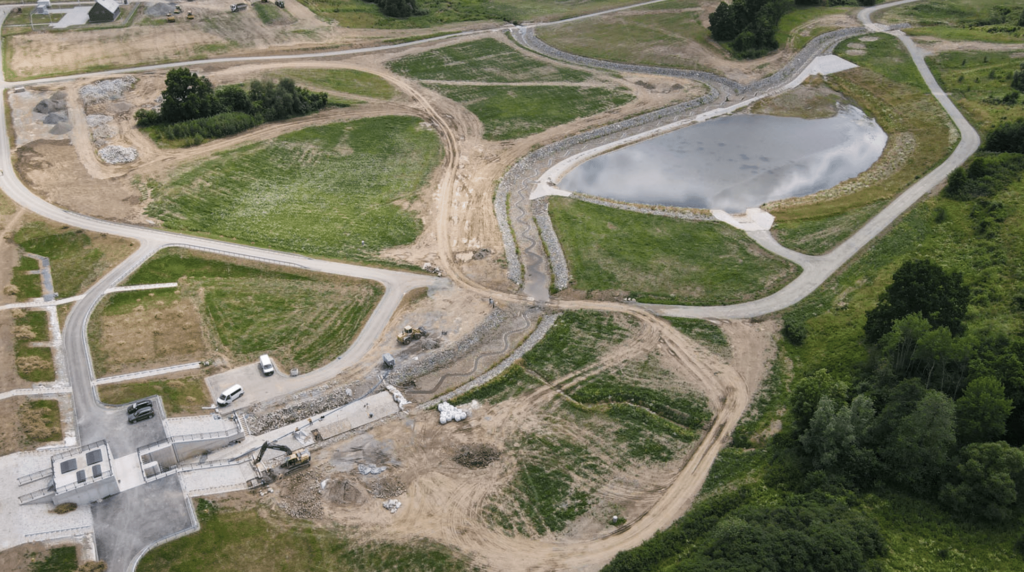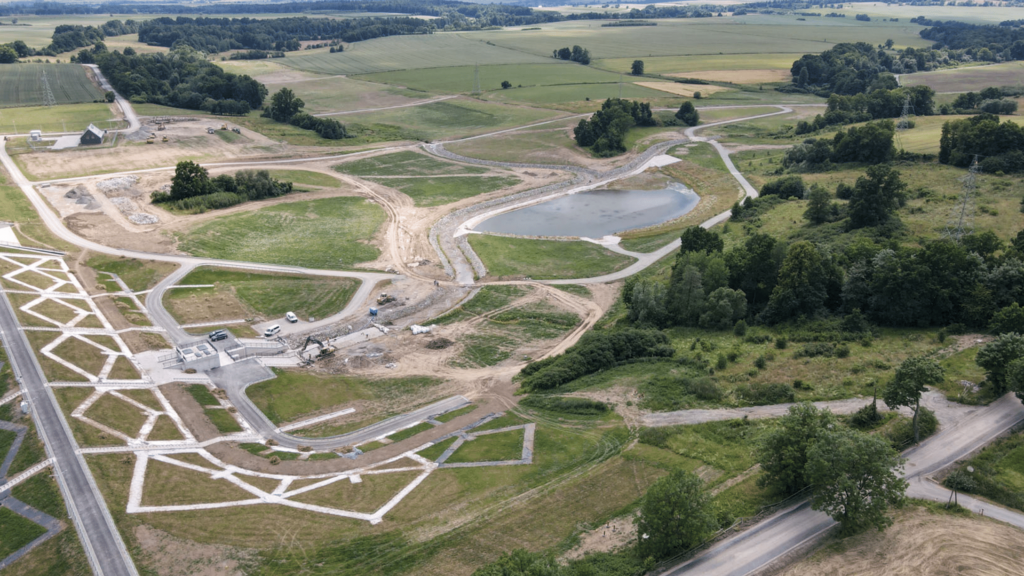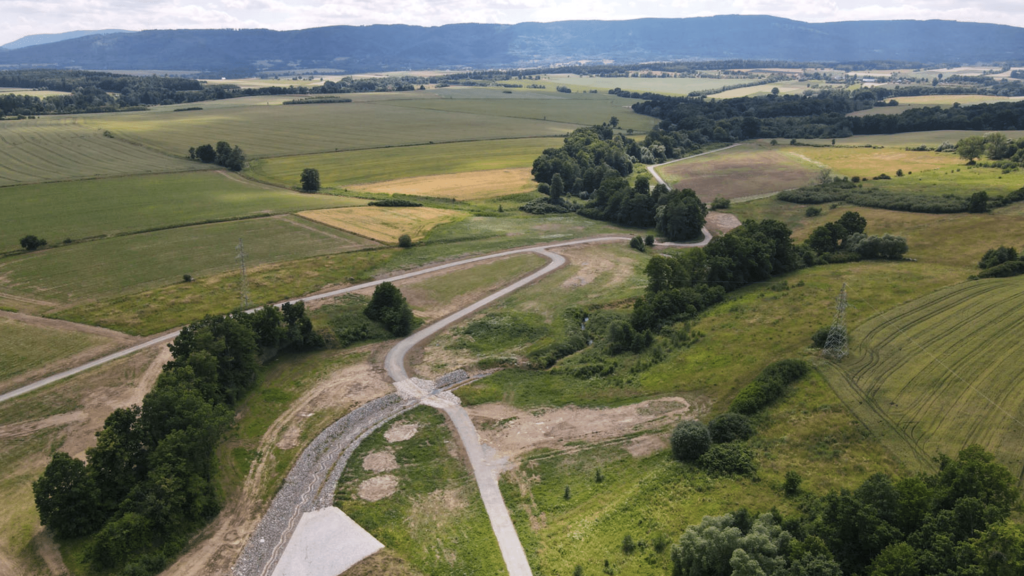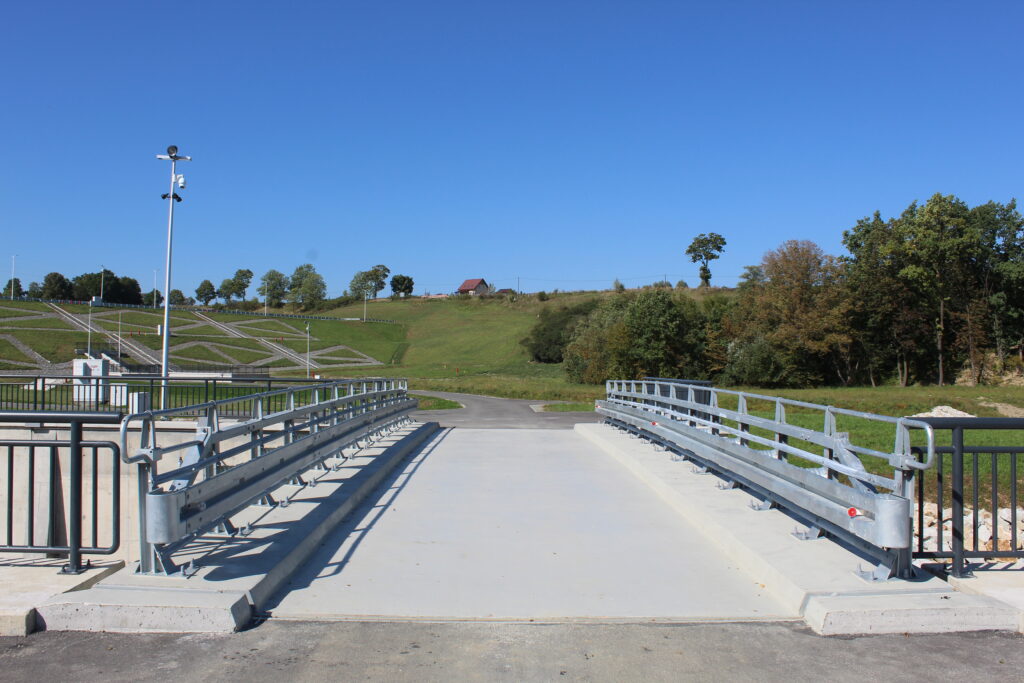The opening of the Krosnowice reservoir is a key element of flood protection for the entire region. Located on the Duna stream in the Kłodzko municipality, it can hold almost 2 million cubic metres of water. The entire construction of the reservoir took about five and a half years at a cost of PLN 175 million. The inundation area of the reservoir at maximum damming is 44 hectares, and the maximum damming height is 14 metres. The reservoir was created by building a dam that is almost half a kilometre long and has a crest width of 5 m.
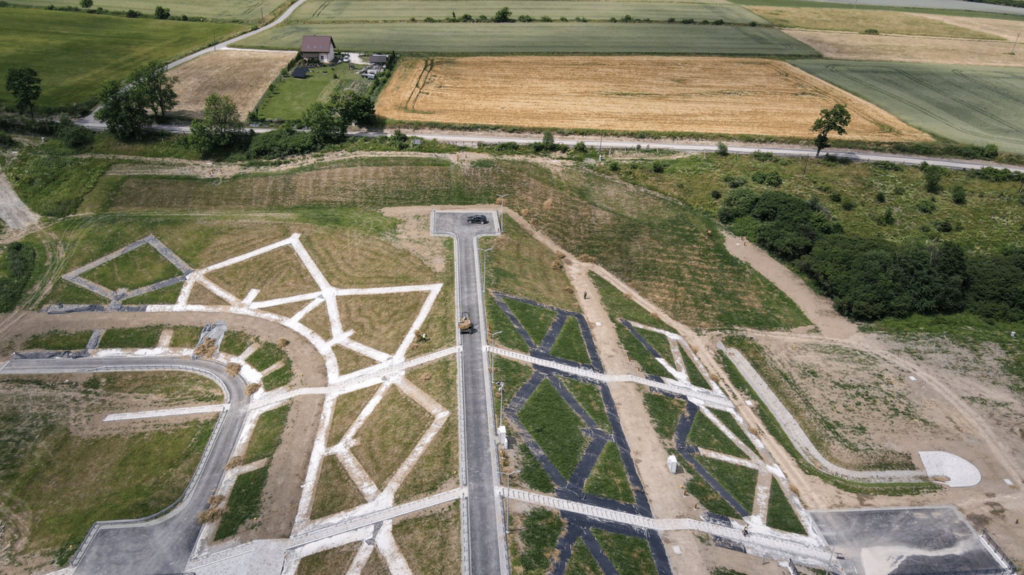
photo: PGW Wody Polskie/SWH Polish Waters
During the entire construction process of the Krosnowice reservoir, special attention was paid to respecting environmental requirements. More than 7,500 coniferous and deciduous trees and nearly 8,500 shrubs were planted to restore and protect oak-hornbeam and riparian natural habitats. It is worth noting that more than 85% of the reservoir bowl remains in its natural state. What’s more, its design allows for fish migration, and nesting boxes for grey wagtails and 50 boxes for bats have been hung.

photo: PGW Wody Polskie
The Krosnowice reservoir is the third of four similar flood control elements in the Kłodzko region. The total retention capacity of all reservoirs (apart from Krosnowice, also in Roztoki, Boboszów and Szalejów Górny) is over 16 million m3. Upon completion of works on the last of the facilities, the system will provide direct protection for approximately 1,200 local residents.
The construction of the Krosnowice reservoir is part of the activities of the Polish Waters within the Odra-Vistula Flood Management Project – OVFMP. It consists of 60 different investments, covering the area experiencing the biggest risk of flooding: Lower Silesia, Upper Silesia, Lesser Poland, Podkarpacie and the Lower Odra region. The system is ultimately intended to protect 15 million Poles. OVFMP is financed by the World Bank and EU funds, with participation of the state budget and its total value is PLN 5.5 billion.
Today’s grand opening was attended, among others, by representatives of the investors, state and local government authorities and contractors. The last of the four dry flood control reservoirs in the area – in Szalejów Górny – is expected to be commissioned in the last quarter of 2023.
